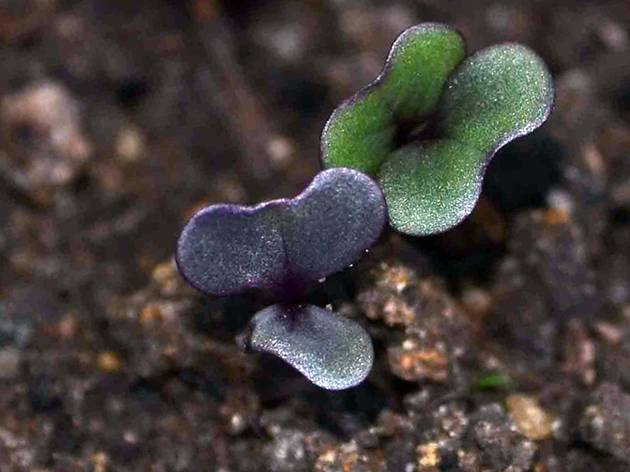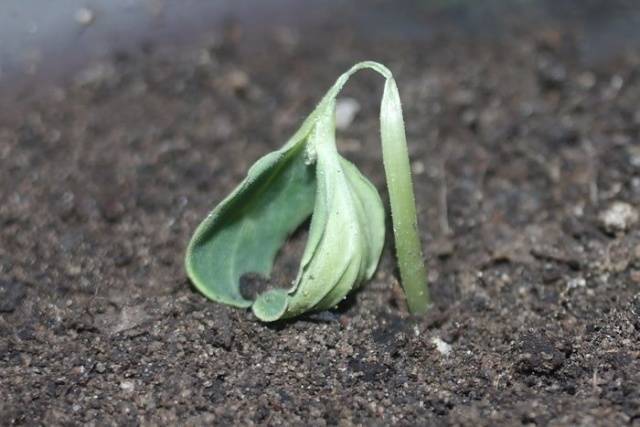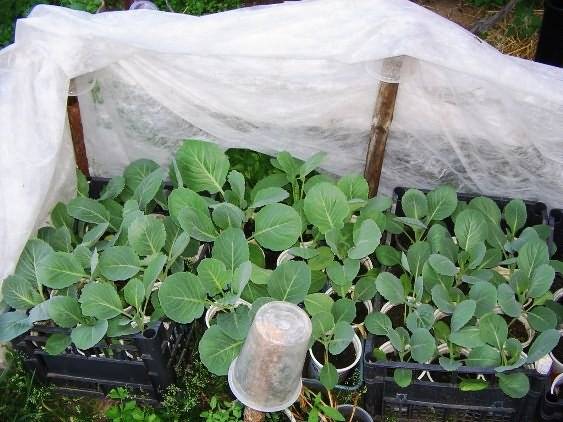Content
Cabbage, along with potatoes, is one of the most common vegetables on the table. That is why any person who receives land for the first time immediately thinks about growing it in their own garden. And begins to grow seedlings. Because it is almost impossible to grow the main types and varieties of cabbage in the middle zone without seedlings. Plants usually germinate quite quickly and amicably, and then, with a high degree of probability, one of three scenarios unfolds: either the plants stretch into a thread and die within the first two weeks, or they grow frail and elongated, and at best there are a few bushes left before planting in the ground which do not bear any harvest. Finally, in the third option, some of the elongated plants somehow survive until they are planted in the ground, but half die after planting, and the rest grow into several frail heads of cabbage that cannot in any way compare with those at the market or at least in stores.
Next year the situation risks repeating itself, although the gardener, taught by bitter experience, will ask everyone for help with the following description of the problem: “The cabbage seedlings have stretched out, what to do in such a situation, how to save them?”
Then, he will probably try to create various special conditions for the seedlings, that is, feed them, treat them with the Atlet growth inhibitor and use other tricks. But if the cabbage seedlings have stretched out, then doing something is often very difficult or almost impossible. Of course, a lot depends on how much she managed to stretch and at what period of development. About all the subtleties growing cabbage seedlings will be discussed later in this article.
Features of cabbage physiology
Cabbage - especially the cabbage varieties - is a very cold-resistant plant. Although she comes from the southern countries of Western Europe and North Africa, after numerous crossings, cold resistance was firmly deposited in her genes. Therefore, it will suffer more likely from high than from low temperatures.
- Interestingly, at normal room temperature +18°C - +20°C, cabbage seeds germinate quite quickly and amicably; after 3-5 days the first shoots may appear. If the ambient temperature is on average about +10°C, then germination will slow down sharply and can take from 10 to 15 days.
- If the temperature during germination drops to zero or even lower (but not lower than -3°C), then the cabbage seeds will still germinate, but they will do so for a very long time - about two to three weeks, and maybe even a month.
- But then, at the seedling stage, cabbage can withstand short-term frosts down to -5°C without any problems. Adult cabbage plants (some varieties: white cabbage, red cabbage, Brussels sprouts, broccoli) can withstand frosts down to -8°C. With warming, they are restored and development continues.
- But at temperatures above +25°C, most types of cabbage already feel depressed. If the weather is hot, more than +35°C, then white cabbage simply does not form a head.
- Everyone is well aware that cabbage needs a lot of water to grow well. But not everyone knows that its need for moisture is not at all the same at different periods of development. Cabbage seeds require more than 50% of their weight in water to germinate. But then, during the formation of the first few leaves, the need for moisture decreases and waterlogging can not only delay the growth and development of seedlings, but also lead to their death. When the cabbage begins to form a head, it again requires the maximum amount of water. And finally, in the last month before harvesting, the watering must be removed, since a large amount of moisture during this period will lead to cracking of the heads of cabbage and their poor preservation.
- It is also important to remember that cabbage is a very light-loving, and even light-demanding plant. Long daylight hours can accelerate the growth of seedlings or the formation of heads of cabbage, and with insufficient light, the seedlings will stretch and weaken.
- Finally, it is necessary to take into account that all types of cabbage are very demanding when it comes to feeding. They need a complete set of all nutrients and microelements, and in an easily accessible form.
Features of growing cabbage seedlings
What is the secret to growing good cabbage seedlings? Experienced gardeners know that this is far from the easiest thing. Perhaps, among all vegetables, growing cabbage seedlings can be called the most difficult, despite the general unpretentiousness of the crop. But the main problem is the cold resistance of cabbage.After all, cabbage seedlings are usually grown at home, in apartments, where the temperature rarely drops below +18°C+20°C, and most often it is much warmer than +25°C or even more. And if the apartment does not have a loggia or balcony, then the seedlings are sure to stretch out, and it becomes simply impossible to do anything in such conditions. Unless you use the refrigerator, which, by the way, some people do successfully. But this is possible with very small quantities of cabbage seedlings and in the first stages of its development. After all, cabbage, in addition to cold, also vitally needs light.
So, what conditions are necessary for successfully growing cabbage seedlings?
Preparing seeds and soil for sowing
As for cabbage seeds, if they were purchased in a store, then, as a rule, there is no need to prepare them specifically for sowing.
It is better to keep your own seeds for several hours until they swell in a solution of Fitosporin or Baikal. This will disinfect them from various fungal infections and strengthen the immune system. Many people additionally harden the seeds, but in relation to cabbage this operation makes little sense, since it can withstand low temperatures quite well.
But preparing the right soil mixture for sowing cabbage is a very important and responsible matter. Because this crop not only loves loose and at the same time fertile soil, but is also very susceptible to numerous diseases. It is especially easily affected by them at the seedling stage. It is for this reason that it is categorically unacceptable to use garden soil for growing cabbage seedlings. After all, it can be infected with various infections and could have been taken from a garden bed where plants of the cruciferous family (radish, radish, rutabaga) grew.It is undesirable to grow cabbage in one place for several years in a row precisely because of the accumulation of harmful root exudates in the soil; moreover, you should not grow cabbage seedlings in such soil.
The best combination for cabbage is the following: take 50% of turf soil or good soil from the store and add the same amount of humus. After thoroughly mixing this mixture, for looseness, add 100 g of vermiculite or perlite and 1 tablespoon of wood ash for every 10 kg of soil. If you have even the slightest doubt about the quality of the soil, it would be better to thoroughly warm the soil in the oven before use. This will get rid of all harmful microbes. And then, in order to populate it with beneficial microorganisms, without which it is difficult to imagine good growth and development, the soil must be spilled with a solution of phytosporin or radiance-1.
Sowing seeds and the first weeks of seedling growth
Here we will only consider sowing seedlings with mandatory picking, since this is the most optimal way to grow cabbage seedlings. The procedure itself picks The seedlings tolerate it quite well.
After the soil for sowing has been prepared, it is poured into special boxes, leveled and small grooves 0.5 cm deep are made. The grooves can be spaced 3 cm apart from each other. The seeds are placed in the grooves every centimeter, then carefully covered the same land. The box can be covered with film to improve germination, or it can be left as is. A box with sown cabbage seeds is left at a temperature of +18°C+20°C.
Under these conditions, seedlings usually appear 4-5 days after sowing.
If this is not done for one reason or another, then the cabbage seedlings will definitely stretch out, very quickly, and you won’t have to expect anything good from them in the future.
If you have any kind of balcony at your disposal, you need to take the cabbage seedlings there. If it is not glazed, and the temperature outside is still below freezing, then you can cover the box with seedlings with an improvised greenhouse. The best option for cabbage seedlings is to move them immediately after germination to a greenhouse or greenhouse, if possible.
At such a low temperature, cabbage seedlings must be kept for about 10-12 days. After that, she needs a pick. Before picking, the seedlings should be shed again with a solution of phytosporin. You can replant in the same soil in which you sowed.
For replanting, containers or cups measuring approximately 6 by 6 cm are prepared. When diving, each seedling is buried in the ground to the level of the cotyledon leaves. It is only desirable that by this time the plants begin to form their first true leaf.
After picking, for better survival, the seedlings can be kept at a temperature of +17°C+18°C, but after 2-3 days it is necessary to lower the temperature again, but to +13°+14°C in the daytime and to +10°+12 °C – at night.
These temperature conditions will be ideal for the growth and development of cabbage seedlings before planting them in the ground.
In addition to temperature, for the good development of seedlings, light is necessary, and not only the brightness and intensity of lighting is important, but also its duration. White cabbage seedlings need at least 12 hours of daylight from the very beginning of development. But not all types of cabbage need such a long daylight hours. For example, cauliflower grows better and sets denser heads if it is given shorter daylight hours at the seedling stage. But broccoli, which is a type of cauliflower, does not need such tricks. She also prefers long daylight hours.
How to help in a situation where seedlings have stretched out
Of course, if the cabbage seedlings have already stretched out, then there is no clear answer to the question of how to save them. As mentioned above, if you live in an apartment without the ability to provide seedlings with at least cool conditions, then it is hardly possible to do anything. You can try to arrive to the plot of land early and sow cabbage seeds directly into the soil. In good weather conditions, this can be done as early as the end of April. Middle and late cabbages, as well as all other varieties, will have time to ripen and produce a decent harvest. Well, you will have to abandon the early varieties.
If you live in a private house and have the opportunity to build at least a small greenhouse for cabbage on your own, then this will be the best option.For everyone else who has a balcony, you can try the following.
If the seedlings have stretched out at a very early stage, this is perhaps the most difficult thing. You can try to carefully pick all the elongated representatives of the cabbage family into separate containers. You just need to take into account what was said earlier.
- If the seedlings have at least one true leaf, they can be buried down to the very cotyledons.
- If cabbage seedlings have only cotyledon leaves, then they need to be replanted without deepening, but by pouring a little soil into the pot. In this case, with further growth of cabbage, you can simply add soil to the pot.
A few days after picking, cabbage seedlings still need to be placed on the balcony in cool conditions. But even under these conditions, most likely only half of the seedlings will survive.
If the seedlings were kept in relatively cool conditions and they stretched out, for example, due to lack of light, then the situation can be improved by providing additional lighting to the plants.
So, it is very difficult to save stretched cabbage seedlings, therefore, it is better to organize conditions for it from the very beginning in which it will be as comfortable as possible. She will thank you for your care with magnificent, juicy and tasty heads of cabbage.





















